



Theme
3BB The lecture and the flipped classroom
INSTITUTION
King Saud bin Abdulaziz University for Health Sciences - Saudi Arabia
In the present era, it is difficult to keep the concentration of college students at its maximum potential during the entire time of the class. This is a challenging task as there are many distractions for student’s concentration and optimal learning. Technology as laptops, cell phones have invaded the classroom, which rose a considerable concern about its effects on the student attends in the college classroom.
The study includes 265 students from medical and basic science classes, who answered the survey about the nature, frequency of laptop and cell phone use in the classroom and student perceptions of the degree of the classroom distraction produced by seventeen self-produced and twenty-four externally produced classroom situations.
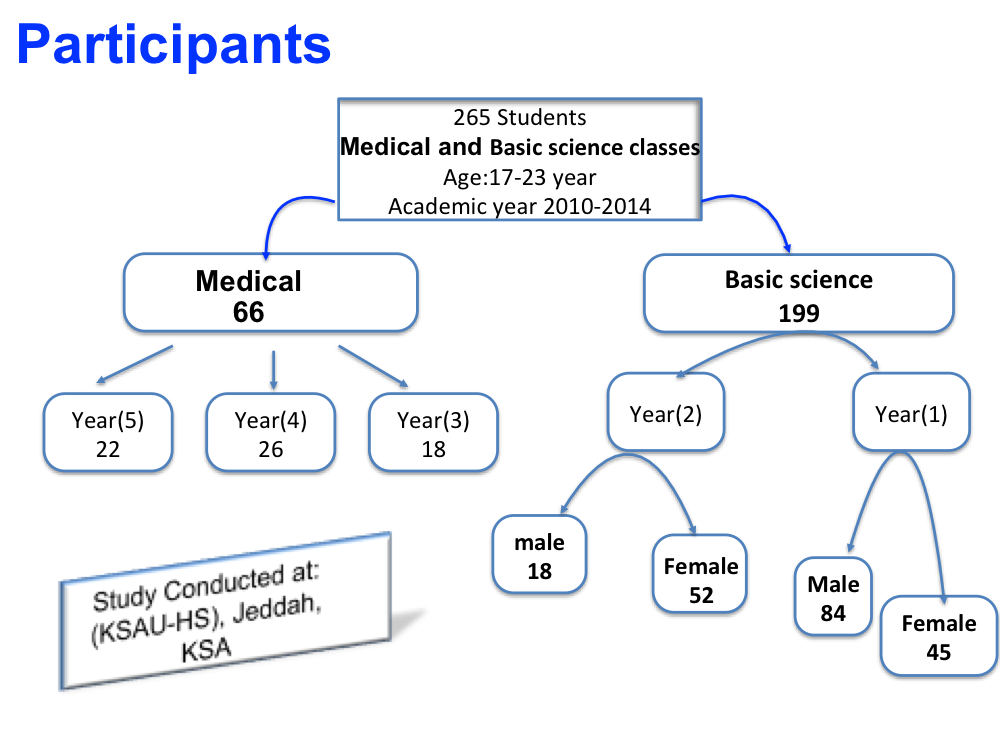
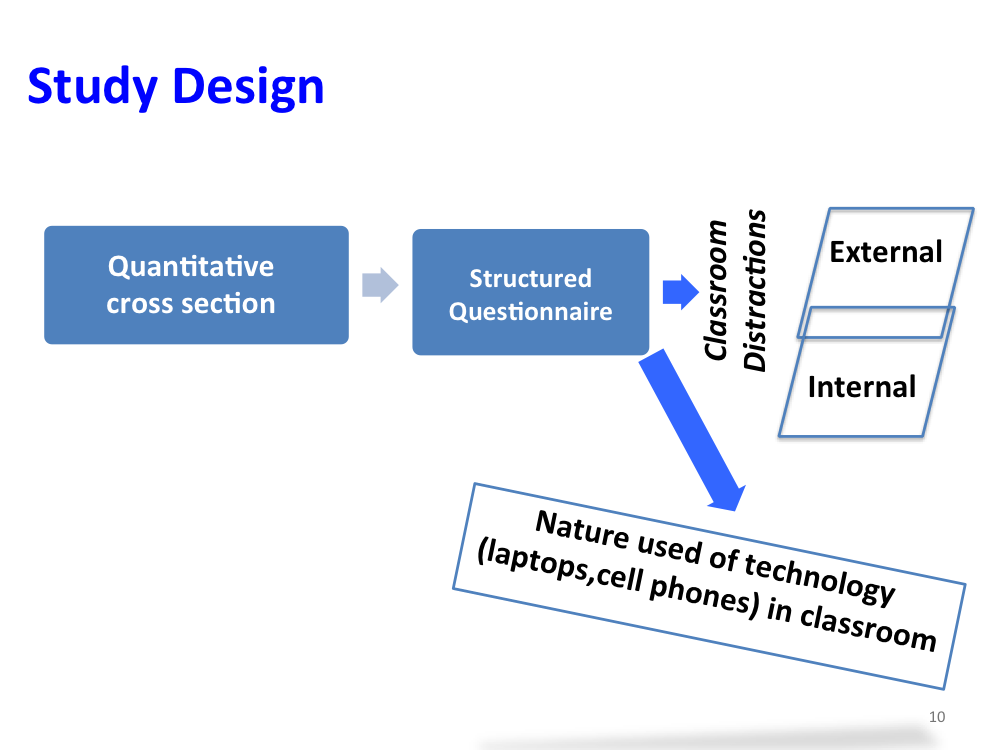
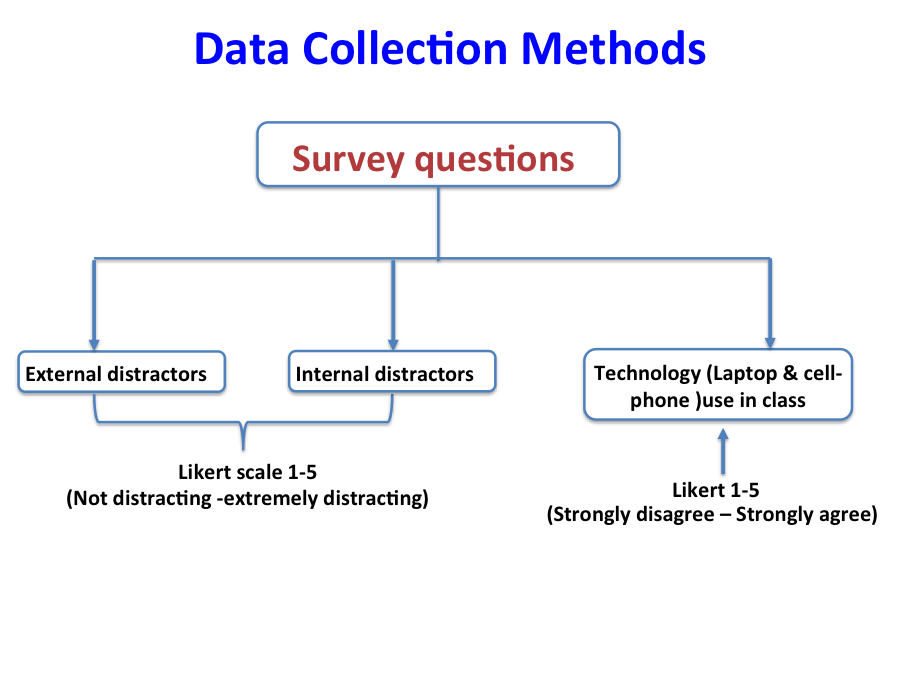
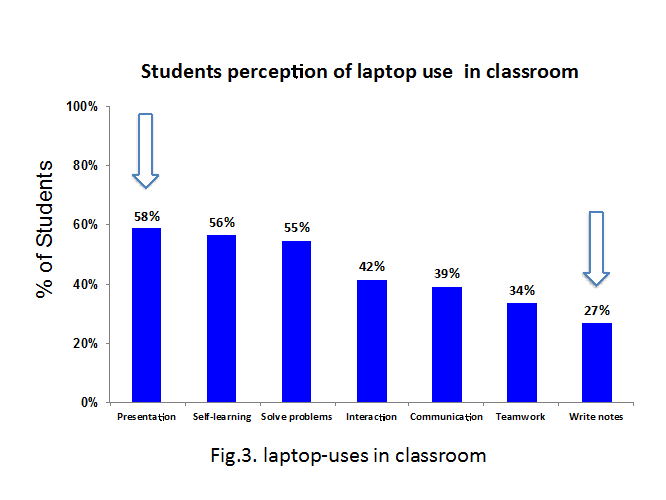
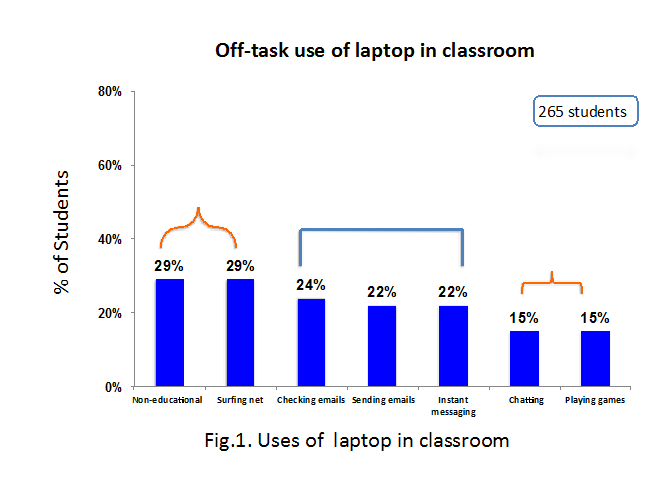
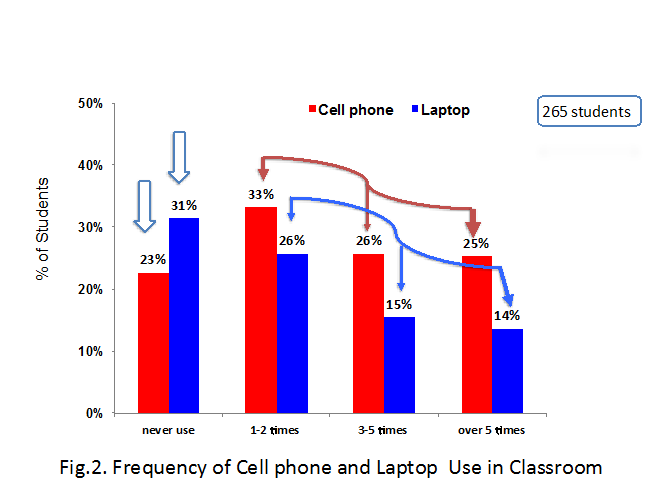
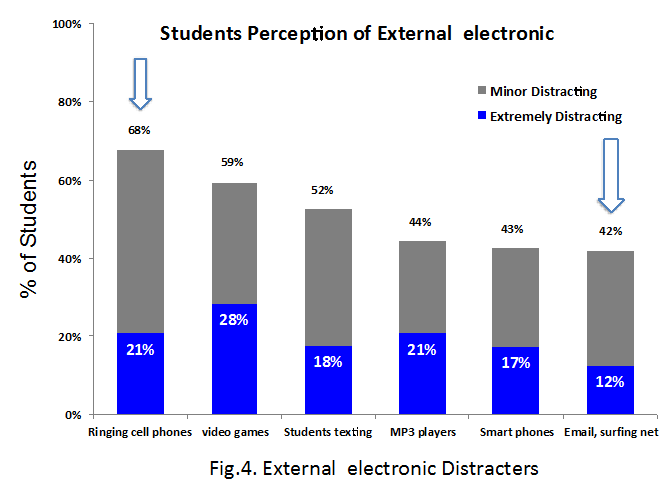
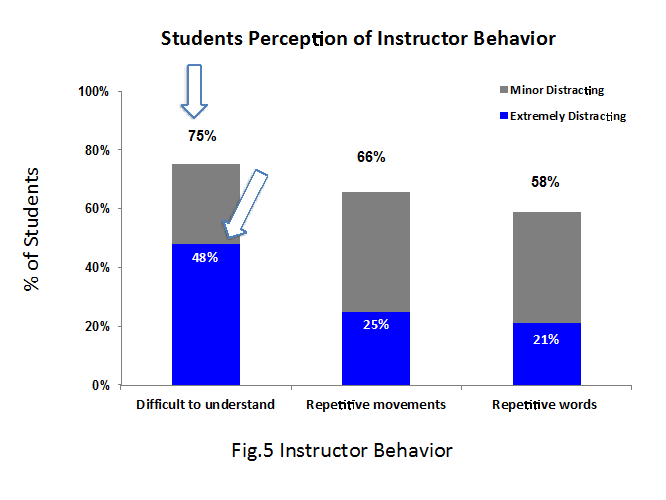

The class materials presentation was the main reason of has a laptop in the class for 58% of students(Fig.1).While 29% of students self-reported using laptops for non-class activities(Fig.2). 25% and 15% of students used the cell phone and laptop (respectively) more than 5 times per class period(Fig.3). Ringing cell phones in class was the most electronic external distractor to 68% of students(Fig4). While the instructor who is difficult to understand was the most external behavior distractor to 75% of students(Fig.5). Students talking in class were the most self-produced distracted to 72% of student concentration(Fig.6).
1) Laptops, cell phones in class pose a distraction to students
2) Some of classroom behavior causes a major distraction to the students
The laptop and cell phone use in the classroom impact negatively on the students’ learning process. The students consider instructors who are difficult to understand and students talking in the class a major destructive.
Anwar Khan
Aamir Omair
for their help and assistance
1-Campbell, S. (2006). Perceptions of mobile phones in college classrooms: Ringing, cheating, and classroom policies. Communication Education, 55 (3), 280-294.
2-Fried, C. (2008). In-class laptop use and its effects on student learning. Computers and Education, 50(2), 906-914.
 Send Email
Send Email